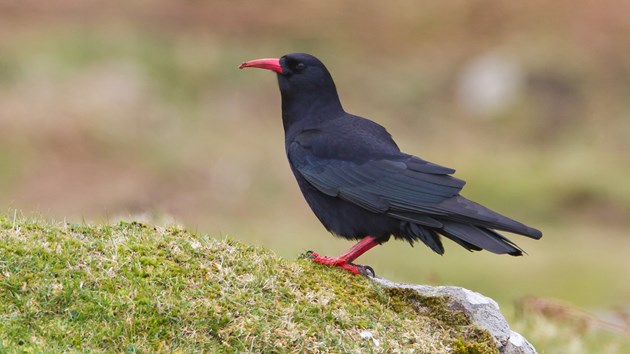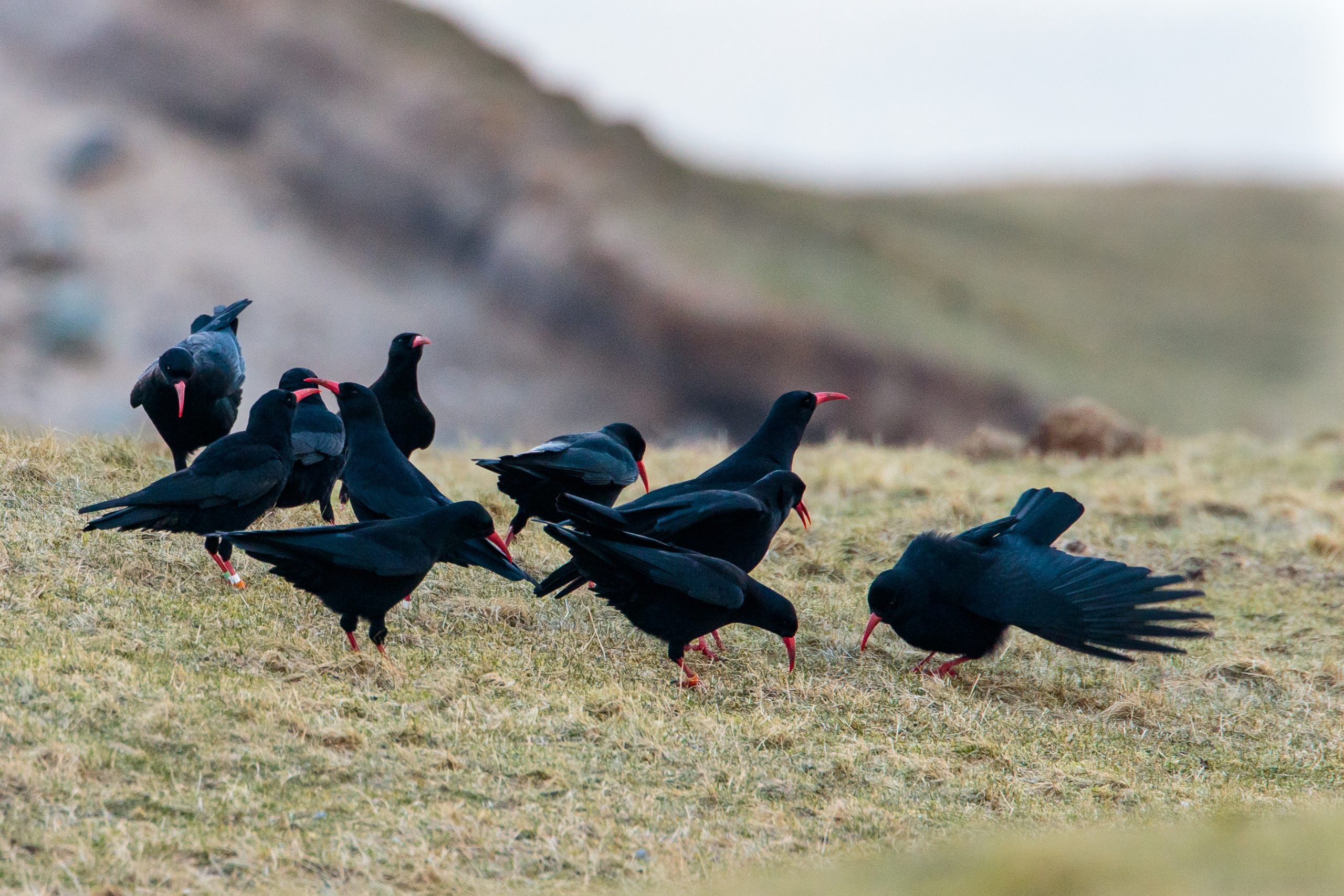
Scotland’s chough population could be lost forever experts warn
The red-billed chough is clinging on in its last Scottish stronghold on the islands of Islay and Colonsay, with barely 50 pairs remaining. And now experts have warned Scotland’s critically endangered population of chough could become extinct within decades.
Chough are doing relatively well in the UK and Ireland, although it noted some concerns about diminishing food supplies and disturbance. So what’s going on in Scotland?
‘Chough rely heavily on agricultural and coastal grasslands, and mainly feed on the invertebrates found in soil and the dung of livestock – cattle in particular, preferring to forage in short, grazed grassland,’ NatureScot ornithologist Dave Parish explains.
‘However, modern agricultural practices support less of the insects that chough need which has impacted juvenile survival in Scotland.
‘Coupled with a limited supply of nest sites, decreasing genetic diversity in the population and an increase in harmful parasites, these corvids are facing a bleak future, with studies predicting they may be lost from Scotland within 50 years without our help
Efforts to save Scotland’s critically endangered population of chough must step up.

Chough. Credit: David Whitaker
Fortunately, a dedicated group of people are studying chough and providing supplementary food at sites around the islands, which has greatly increased the survival rates of young birds, leading to a steady increase in chough numbers in recent years.
But sustainable, long-term support is needed to help save Scotland’s chough, as Dave highlights:
‘Although these actions are a great help, this is not a long-term solution and needs to be backed up with habitat improvements to provide more insects in the wider countryside,’ Dave said.
‘Support for farmers to carry out chough-friendly practices and provide robust nest sites for the birds is key to maintaining chough populations in Scotland.
‘The new report pulls together information from successful conservation projects across the UK and Ireland.
‘Coupled with our experience gained from working with the many passionate farmers on Islay and Colonsay, we can devise revised, and hopefully better, measures for the new agriculture support package that is being developed.’
The genetic problems facing Scottish chough are harder to overcome as this population is small and relatively isolated and will require the release into the population of birds bred from different stock elsewhere.
This is currently being investigated and, if it goes ahead, it is hoped that this will ultimately strengthen the birds’ ability to resist parasite infections.
Dave believes that with the right support Scotland’s chough will still have a future:
‘This important species is facing a tough time in Scotland, but our work with partners in the Scottish Chough Forum and elsewhere has shown us exactly what the problems are and how we might resolve them,’ he said. ‘We hope partners will continue to work together to help save Scotland’s chough.’
Gavin Siriwardena, who managed the review work for the BTO, added: ‘Chough populations across Britain and Ireland are highly fragmented, and conservation work is currently not strongly coordinated.
‘All interested groups, and the species itself, would benefit from more consistent reporting of demographic and count data. Formal studies of the effectiveness of the management measures implemented under schemes like the AECS in Scotland would also be very valuable.’
TAGS

